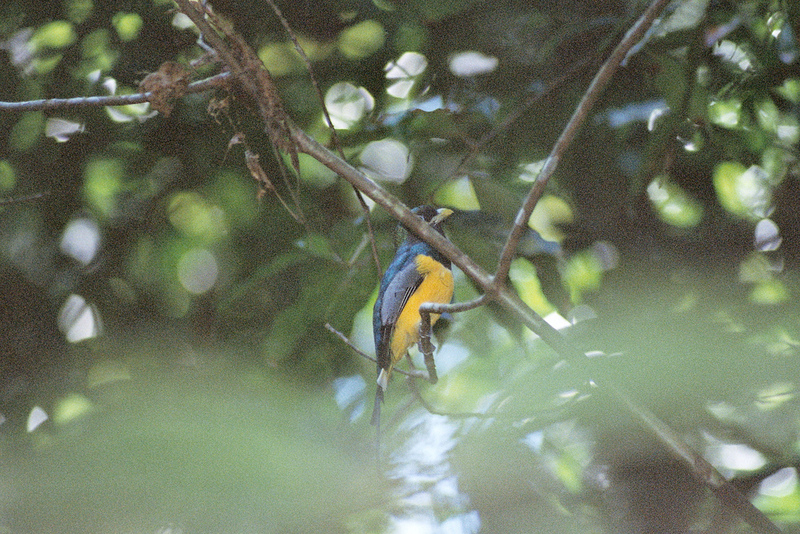|
| 질의: Small white | 결과: 794번째/2237 | |
Black-throated Trogon (Trogon rufus) - Wiki
| 제목: | Black-throated Trogon (Trogon rufus) - Wiki
| |

| 해상도: 1024x683
파일크기: 639864 Bytes
등록시간: 2008:01:11 15:49:20
|
Black-throated Trogon
From Wikipedia, the free encyclopedia
Order: Trogoniformes
Family: Trogonidae
[Photo] Black-throated Trogon (Trogon rufus), Costa Rica. Source: Flickr (www.flickr.com/photos/janvantwillert/130111108/). Date: Taken on April 17, 2006. Author: Jenny & Jan (www.flickr.com/photos/janvantwillert/).
The Black-throated Trogon, Trogon rufus, is a near passerine bird in the trogon family, Trogonidae. It is also called Yellow-bellied Trogon, but as it is not the only trogon with a yellow belly this should be avoided. It breeds in lowlands from Honduras south to western Ecuador and northern Argentina.
Most trogons have distinctive male and female plumages, with soft, often colourful, feathers. This relatively small species is 23-24 cm long and weighs 54-57 g, with a white undertail with black barring, a yellow bill and wing coverts which are vermiculated with black and white, but appear grey at any distance.
The male Black-throated Trogon has a green head, upper breast and back, black face and throat, and golden yellow belly. The female has a brown head, upper breast and back, rufous upper tail and yellow belly. Immatures resemble the adults but are duller, and young males have a brown throat, breast and wing coverts.
The call is a churring krrrrrr, and the song is a typical trogon series of a few clear whistles, cuh cuh cuh cuh.
It is a resident of the lower levels of damp tropical forests, and prefers the deep shade of the understory. Black-throated Trogons feed on insects and fruit, often taken in flight; they opportunistically utilize arthropods that have been startled by other predators such as coatimundis (Nasua nasua). Their broad bills and weak legs reflect their diet and arboreal habits. Although their flight is fast, they are reluctant to fly any distance. They typically perch upright and motionless.
The Black-throated Trogon nests 1-6 m high in an unlined shallow cavity, with a typical clutch of two white eggs.
http://en.wikipedia.org/wiki/Black-throated_Trogon
| The text in this page is based on the copyrighted Wikipedia article shown in above URL. It is used under the GNU Free Documentation License. You may redistribute it, verbatim or modified, providing that you comply with the terms of the GFDL. |
|
^o^
동물그림창고 똑똑전화 누리집
^o^
|
|